#76 in Vietnam
Bánh Rán: Basic Information
Pronunciation
Alternative Name(s)
Dish Type
Course
Mealtime
Popular Bánh Rán Variations
Bánh Rán: Ingredients and Preparation
Main Ingredients
Main Cooking Method
Preparation Process
Bánh Rán: A Deep Dive
Cultural Significance
Taste
Texture
Aroma
Color
Serving Style
Serving Temperature
Accompaniment
Occasions
Seasons
Special Diets
Calories
Popularity
Popular Similar Dishes
- Jian Dui
- Buñuelos
Popular Dining Area
Bánh rán is a street food treat in Vietnam that features glutinous rice balls deep-fried until the outer layer is crunchy and golden brown.
Occasionally, bánh rán in the north is covered with sesame seeds, while the filling is a mixture of mung bean paste with coconut milk or a savory blend of pork.
Aside from the traditional glutinous outer layer, regular rice flour is also great, with some even featuring potato in the dough mix.
Once fried, the dough will expand, giving the filling more space to the point that it’s possible to shake the filling in the hollow space created.
For the savory bánh rán, the filling consists of ground pork, wood ear mushrooms, dry vermicelli, and carrots.
Usually, Vietnamese add egg to the savory filling to help bind all the elements. When served, savory bánh rán goes well with sweet and sour chili sauce.
As for the southern version, bánh cam is the sweet adaptation of this snack. Furthermore, the mung bean filling of bánh cam usually fits exactly to its inside instead of being able to rattle around inside the fried dough.
To add to that, the Southern version comes with a sweet syrup, unlike the Northern bánh rán. Stick around to expand your knowledge about the positive and negative aspects when consuming bánh rán before diving into some concerns that people often have.
Also, make sure to discover some specialties that are like these Vietnamese deep-fried balls.
Key Points
Bánh Rán Images
Pros and Cons of Eating Bánh Rán
These are a few features that people need to consider carefully to enjoy bánh rán with no worry whatsoever:
Pros
Cons
Don’t miss the chance to learn more about bánh rán by going through some of the inquiries that many often wonder about this fried ball treat.



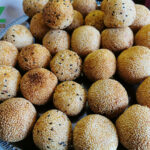
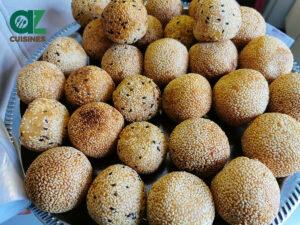
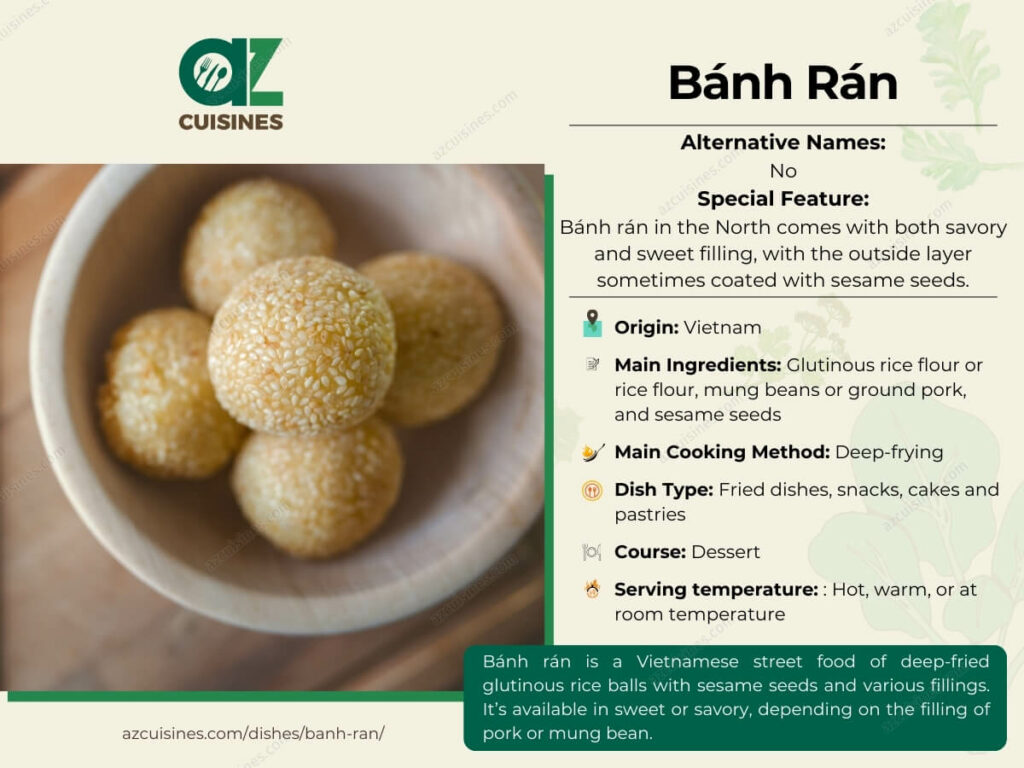
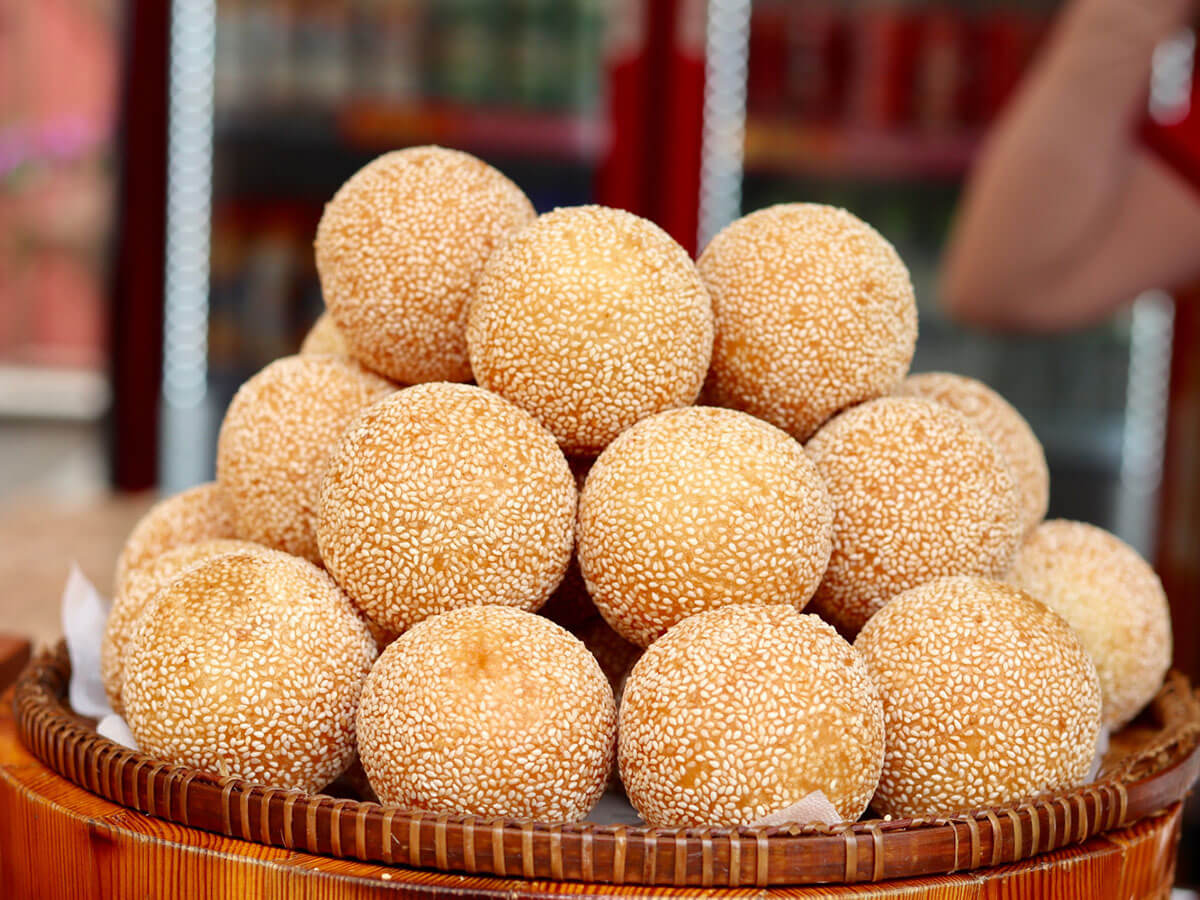



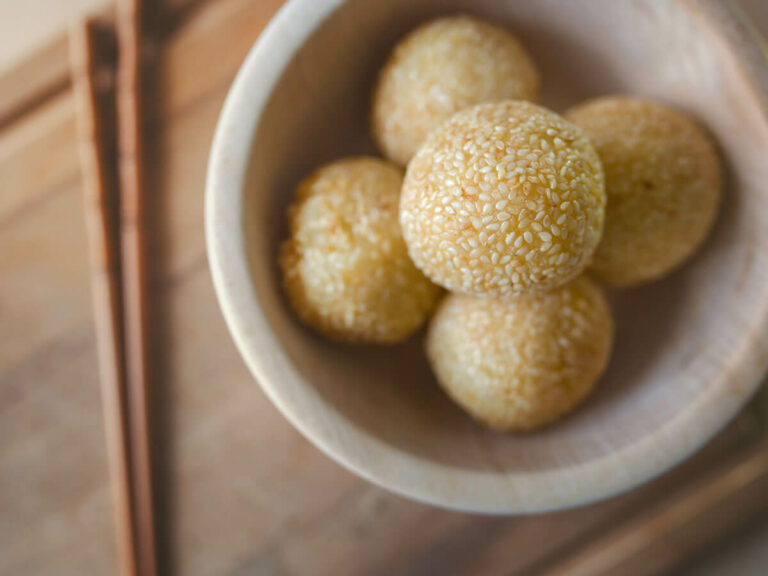
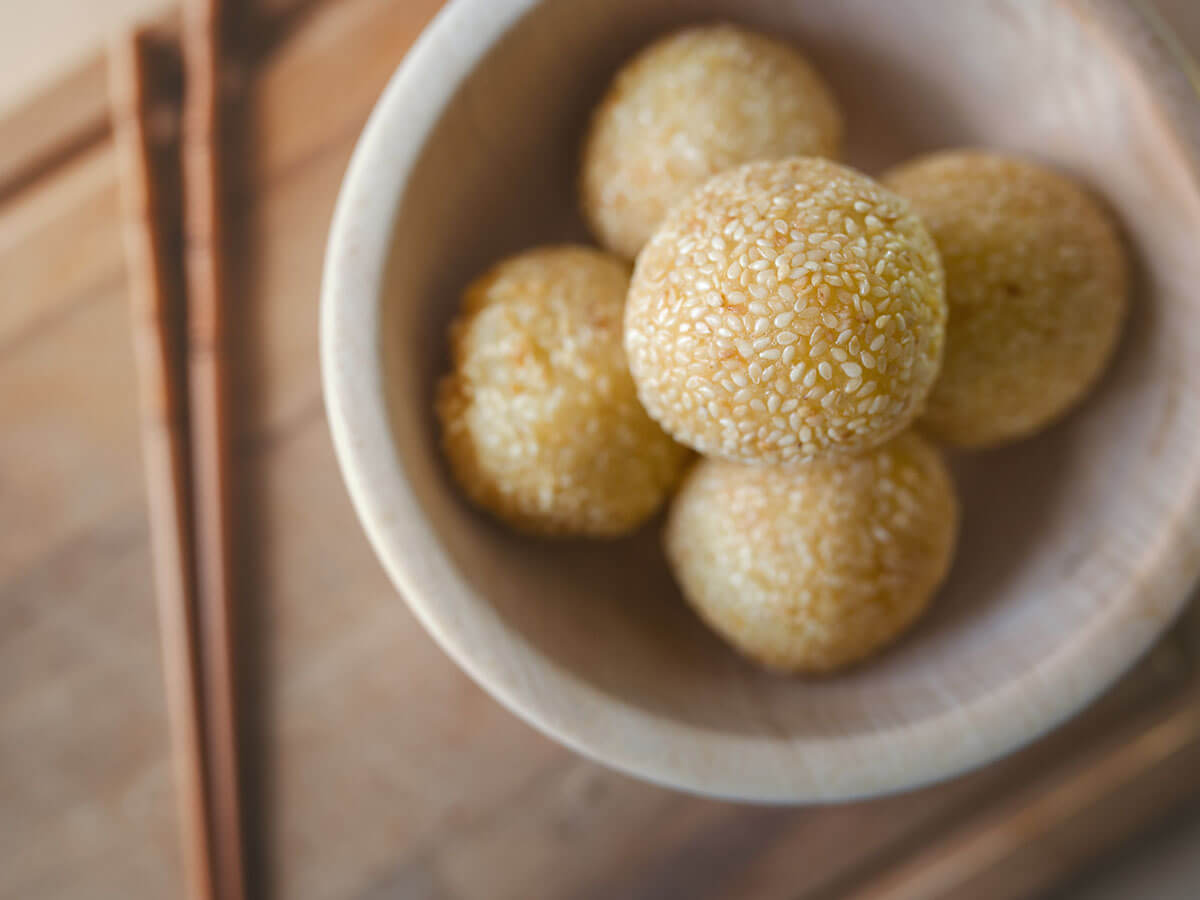
Truc Tran (Kris)
Senior Food Editor
Expertise
Home Cooking, Meal Planning, Recipe Development, Baking and Pastry, Food Editor, Cooking-video Maker, Vietnamese Food Evaluation Expert
Education
Truc Tran (Kris), an experienced food writer and editor, is great at exploring and describing global cuisines, from simple street food to fancy dining. In her writing, she skillfully mixes different flavors, cooking methods, and culinary traditions, showing the unique character of various cultures through their food and drinks. On azcuisines.com, Kris highlights her knowledge, especially in Asian cuisine and worldwide traditional dishes.